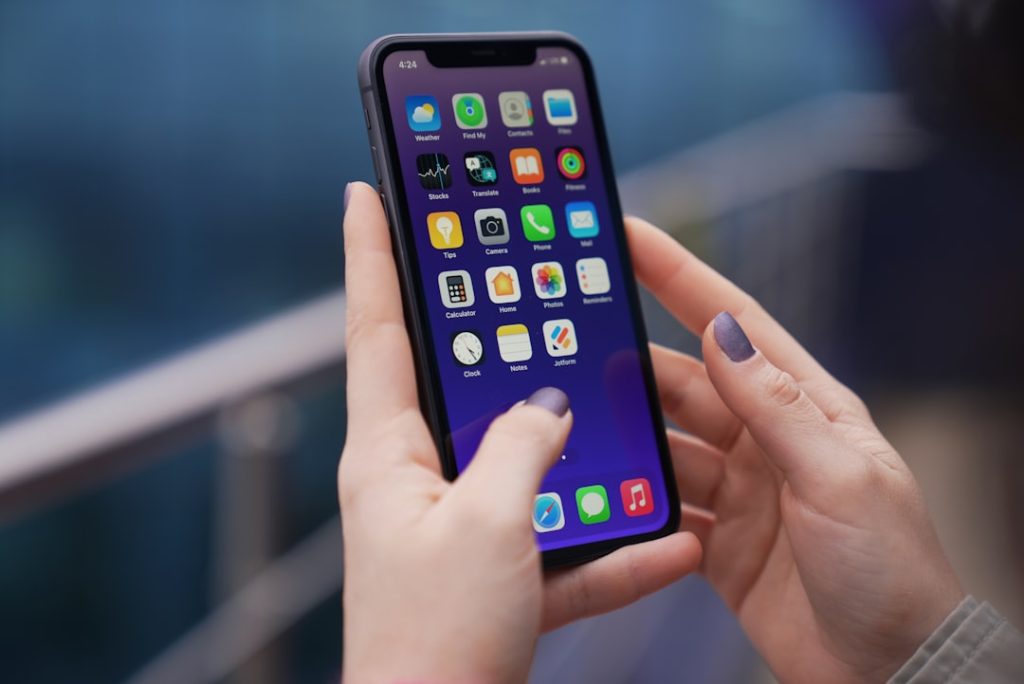In the realm of customer service, the efficiency of inbound and outbound calls plays a pivotal role in shaping the overall customer experience. Inbound calls, which are initiated by customers seeking assistance or information, represent a critical touchpoint for businesses. The manner in which these calls are handled can significantly influence customer satisfaction, loyalty, and retention.
For instance, a prompt and knowledgeable response to a customer inquiry can transform a potentially frustrating experience into a positive interaction, fostering trust and encouraging repeat business. Conversely, long wait times or unhelpful responses can lead to dissatisfaction, prompting customers to seek alternatives. Outbound calls, on the other hand, serve as a proactive approach to customer engagement.
These calls can be utilized for various purposes, including follow-ups on previous interactions, promotional outreach, or surveys to gauge customer satisfaction. The effectiveness of outbound calling strategies can directly impact a company’s ability to generate leads, close sales, and maintain relationships with existing clients. For example, a well-timed follow-up call after a purchase can enhance the customer’s perception of the brand and increase the likelihood of future purchases.
Therefore, understanding the nuances of both inbound and outbound calls is essential for businesses aiming to optimize their communication strategies and enhance overall operational efficiency.
Key Takeaways
- Efficient inbound and outbound calls are crucial for customer satisfaction and business success.
- Effective call routing and IVR systems can improve customer experience and streamline call handling processes.
- CRM systems can help streamline inbound and outbound calls by providing agents with relevant customer information.
- Training and empowering call center agents is essential for maximizing efficiency and delivering exceptional customer service.
- Leveraging analytics and reporting can help optimize inbound and outbound calls by identifying areas for improvement and monitoring performance.
Implementing Effective Call Routing and IVR Systems
The implementation of effective call routing and Interactive Voice Response (IVR) systems is crucial for managing the flow of inbound calls efficiently. Call routing technology allows organizations to direct incoming calls to the most appropriate agent or department based on predefined criteria such as the caller’s needs, language preference, or previous interactions. This targeted approach not only reduces wait times but also ensures that customers are connected with agents who possess the relevant expertise to address their concerns effectively.
For instance, a telecommunications company might route technical support calls to specialized agents trained in troubleshooting specific issues, thereby increasing the likelihood of first-call resolution. IVR systems further enhance call management by providing callers with automated options to navigate through menus before reaching an agent. This self-service capability empowers customers to find answers to common queries without waiting for an agent’s assistance.
For example, an airline’s IVR system might allow customers to check flight status, change reservations, or request boarding passes through simple voice commands or keypad inputs. By streamlining the call process in this manner, businesses can alleviate congestion during peak hours and improve overall customer satisfaction by minimizing frustration associated with long hold times.
Utilizing CRM Systems to Streamline Inbound and Outbound Calls

Customer Relationship Management (CRM) systems are invaluable tools for streamlining both inbound and outbound call processes. These systems centralize customer data, enabling agents to access comprehensive information about each caller’s history, preferences, and previous interactions at their fingertips. When an inbound call is received, agents can quickly retrieve relevant details, allowing them to personalize their responses and provide tailored solutions.
For instance, if a customer calls regarding a billing issue, an agent equipped with CRM insights can reference past transactions and offer immediate resolutions rather than asking repetitive questions. In addition to enhancing inbound call handling, CRM systems play a vital role in optimizing outbound calling efforts. Sales teams can leverage CRM data to identify high-potential leads based on previous interactions or demographic information.
By segmenting customers according to their preferences or behaviors, businesses can create targeted outreach campaigns that resonate more effectively with their audience. For example, a software company might use CRM analytics to identify clients who have shown interest in specific features but have not yet made a purchase. By reaching out with tailored messaging that highlights those features, the sales team can increase conversion rates and drive revenue growth.
Training and Empowering Call Center Agents for Maximum Efficiency
| Metrics | Target | Actual |
|---|---|---|
| Agent Training Hours | 40 hours per quarter | 35 hours per quarter |
| Customer Satisfaction Score | 90% | 92% |
| First Call Resolution Rate | 85% | 88% |
| Agent Retention Rate | 80% | 85% |
The effectiveness of inbound and outbound calls is heavily reliant on the skills and confidence of call center agents. Comprehensive training programs are essential for equipping agents with the knowledge and tools they need to handle various customer scenarios effectively. Training should encompass not only product knowledge but also communication skills, problem-solving techniques, and emotional intelligence.
For instance, role-playing exercises can simulate real-life interactions, allowing agents to practice responding to challenging customer inquiries while receiving constructive feedback from supervisors. Empowering agents goes beyond initial training; it involves fostering an environment where they feel confident in making decisions that benefit the customer. Providing agents with access to resources such as knowledge bases or decision-making frameworks enables them to resolve issues independently without unnecessary escalations.
For example, if an agent has the authority to offer discounts or credits in certain situations, they can address customer concerns promptly and effectively, enhancing the overall experience. This empowerment not only boosts agent morale but also contributes to higher levels of customer satisfaction as issues are resolved more swiftly.
Leveraging Analytics and Reporting to Optimize Inbound and Outbound Calls
Analytics and reporting tools are instrumental in optimizing both inbound and outbound call operations. By analyzing call data, businesses can identify trends related to call volume, peak times, average handling time, and customer satisfaction scores. This information allows organizations to make informed decisions regarding staffing levels and resource allocation.
For instance, if data reveals that call volume spikes during specific hours, management can schedule additional agents during those times to ensure timely responses. Moreover, reporting tools enable businesses to assess the effectiveness of their outbound calling campaigns. Metrics such as conversion rates, call outcomes, and customer feedback can provide insights into which strategies are yielding positive results and which may require adjustments.
For example, if a particular script used during outbound calls consistently leads to low engagement rates, it may be time to revise the messaging or approach. By leveraging analytics effectively, organizations can continuously refine their calling strategies to enhance performance and achieve better outcomes.
Integrating Automation and AI for Improved Call Handling

The integration of automation and artificial intelligence (AI) into call handling processes has revolutionized how businesses manage inbound and outbound communications. Automated systems can handle routine inquiries through chatbots or voice assistants, allowing customers to receive immediate assistance without waiting for an agent’s availability. For instance, a retail company might deploy an AI-driven chatbot on its website that can answer frequently asked questions about product availability or order status 24/7.
AI technologies also enhance call routing capabilities by analyzing caller data in real-time to determine the best course of action. Machine learning algorithms can predict which agents are most likely to resolve specific issues based on historical performance data. This predictive routing ensures that customers are connected with agents who possess the right skills for their needs, ultimately leading to faster resolutions and improved satisfaction rates.
Furthermore, AI can assist in monitoring calls for quality assurance purposes by analyzing conversations for compliance with company standards and identifying areas for improvement.
Strategies for Minimizing Call Handling Time and Increasing Productivity
Minimizing call handling time while maintaining high-quality service is a critical objective for any call center operation. One effective strategy is implementing streamlined processes that reduce unnecessary steps during interactions. For example, providing agents with quick access to relevant information through integrated systems can eliminate time spent searching for answers during calls.
Additionally, utilizing templates for common inquiries allows agents to respond more efficiently while ensuring consistency in messaging. Another approach involves setting clear performance metrics that encourage productivity without compromising service quality. Establishing benchmarks for average handling time (AHT) can motivate agents to work efficiently while still focusing on delivering exceptional customer experiences.
Regular coaching sessions can help agents refine their skills in managing calls effectively within these timeframes. Moreover, fostering a culture of collaboration among team members encourages knowledge sharing and best practices that contribute to overall productivity improvements.
Ensuring Quality Assurance and Customer Satisfaction in Inbound and Outbound Calls
Quality assurance is paramount in maintaining high standards for inbound and outbound calls. Implementing regular monitoring processes allows organizations to evaluate agent performance against established criteria such as adherence to scripts, tone of voice, and problem-solving abilities. By conducting periodic reviews of recorded calls or live monitoring sessions, supervisors can provide constructive feedback that helps agents improve their skills over time.
Customer satisfaction surveys following interactions provide valuable insights into how well calls are being handled from the customer’s perspective. Gathering feedback through post-call surveys or follow-up emails enables businesses to identify areas where improvements are needed while also recognizing outstanding performance among agents. For instance, if survey results indicate that customers frequently express dissatisfaction with long wait times or unresolved issues, management can take proactive steps to address these concerns through targeted training or process enhancements.
In conclusion, efficient management of inbound and outbound calls is essential for delivering exceptional customer experiences while driving business success. By implementing effective call routing systems, leveraging CRM technology, training agents comprehensively, utilizing analytics for optimization, integrating automation solutions, minimizing handling times strategically, and ensuring quality assurance practices are in place, organizations can create a robust framework that enhances both operational efficiency and customer satisfaction.



